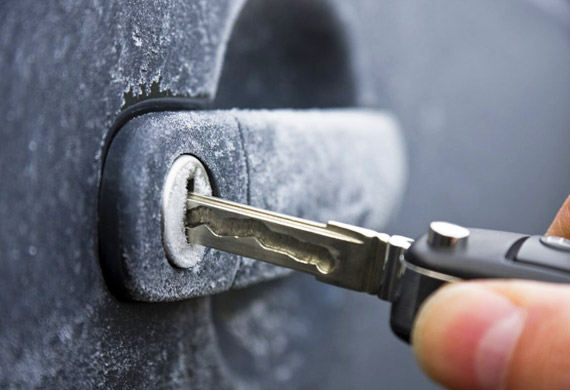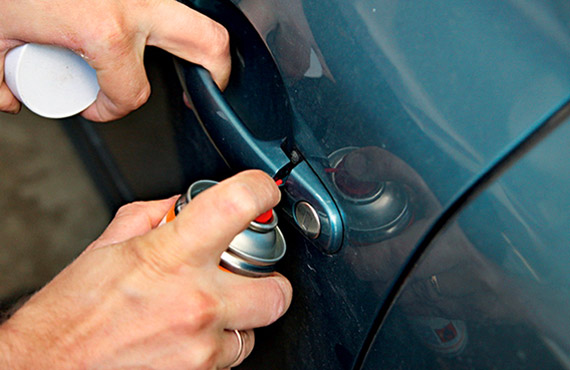What to do if the locks on your car are frozen?
The lock in the car is frozen, what should I do? How to open frozen car door or trunk locks? Every driver sooner or later faces such a problem. Especially often, car locks freeze after washing (if they are not dried and treated properly) or after a long period of parking in the cold with high air humidity.
We will tell you how to open the doors in your car if they are frozen, and what you need to do to prevent the locks from freezing.
At the end of the article, watch a video about what you can do to prevent your car locks from freezing, and how to make sure they never freeze again.
By the way, it is worth keeping in mind that the central lock in a car in the cold may not open not only because it is frozen, but also because the battery is dead. And often in severe frost both of these reasons can be present.
How to open the lock in a car if it is frozen?

Depending on the air temperature and, accordingly, the degree of freezing of the car locks, there are several effective ways to open the doors and get into the car interior.
In mild frost (up to - 3 °C):
- You can try to open a frozen lock by bending your palm into a tube, placing it against the lock, and breathing into it.
- If the first method does not help, then heat the key over a lighter and, inserting it into the lock, try to carefully turn it and open the car.
In average frost (up to - 10 °C):
- Go home, fill a bottle with hot water and pour it over the castle. Most likely, after this it will open, but the car will definitely need to be dried, or the cylinder and inside of the lock must be treated with a moisture-displacing compound, otherwise the water in it will freeze again.
In severe frost (up to - 30 °C):
- Pour medical alcohol into the frozen car lock with a syringe. Pure alcohol dissolves ice, while actively releasing heat. It’s not for nothing that winter washer fluids are made based on alcohol. But you shouldn’t pour anti-freeze into locks - isopropyl alcohol is quite aggressive, and in car fluids it is diluted with water.
- Use a defroster key fob or a special liquid key aerosol to open the car locks.
When opening a frozen lock, do not try to turn the key by force! Moreover, do not use pliers or other auxiliary means for this, since with their help you are more likely to break the key than to open the door or trunk of the car.
Also, you should not pour kerosene-based liquids into the locks, which are used to unscrew the nuts, since they are hygroscopic (absorb moisture). But if you do use them, be sure to treat the locks with a moisture-displacing lubricant afterwards.
What can I do to keep my car locks and doors from freezing?

To keep your car locks and doors from freezing, you should follow a few simple rules:
- If your car locks freeze regularly, try to dry them. To do this, you need to put the car in a warm box or underground parking for several hours and wait until all the moisture evaporates.
- If the lock has thawed and the car door refuses to open, it means it is frozen. In order not to tear off the handles and seal, the door should not be pulled towards you, but pushed back - away from you. By pressing on the car door, you deform the rubber seal, the ice crumbles and no longer blocks the entrance.
- Next time you remove snow from your car, don't forget to brush the top and bottom of the driver's door. Otherwise, snow will get inside, melt, and then freeze.
- To prevent car doors from freezing, for example, after washing, the rubber seals must be wiped dry and lubricated with a water-repellent liquid. Or you can open the doors and trunk for a few minutes, then the excess moisture will either evaporate or freeze.
- To prevent the windows in your car from freezing, you need to ventilate the interior before parking at night. If windows freeze, if they have power windows, do not attempt to open them. Warm up the interior first, otherwise there is a high probability of damage to the window motor. When the window thaws, it can be opened and treated with silicone grease.
- To reduce the level of humidity in the car interior, you can place a thick newspaper under your feet. The newspaper will absorb water, the humidity level will decrease, and nothing will freeze in the car.
But even if the locks in your car did not freeze, and you were able to get into the interior, this does not mean that it will start without problems. We recommend studying practical tips: how to start a car in cold weather.











